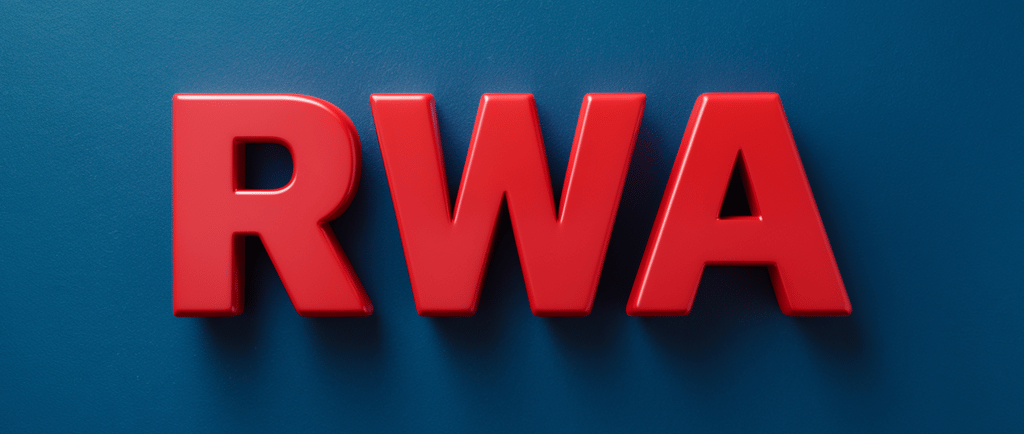What Are Real World Assets?
Learn about Real World Assets (RWAs) and how they differ from most cryptocurrencies like Bitcoin and Ethereum.
BLOCKCHAIN
9/22/20253 min read


Introduction to Real World Assets
Real World Assets (RWAs) represent a significant evolution in the cryptocurrency and blockchain landscape. Unlike typical cryptocurrencies such as Bitcoin and Ethereum, which primarily serve as digital currencies or platforms for decentralized applications, RWAs provide legal rights to the underlying asset, ensuring real ownership and security. This paradigm shift opens up new opportunities for investors and transforms the way we perceive and interact with digital assets.
Understanding RWAs
RWAs are essentially digital representations of physical or digital assets that are tokenized on a blockchain. These assets can range from tangible items like real estate properties and precious metals to intangible assets such as securities and stablecoins. The key distinction of RWAs lies in their ability to confer legal ownership rights to the token holders, providing a direct link to the underlying asset.
RWAs vs. Traditional Cryptocurrencies
Traditional cryptocurrencies like Bitcoin and Ethereum operate primarily as decentralized currencies or platforms for building decentralized applications (dApps). While they have revolutionized the financial and technological sectors, they do not offer intrinsic legal claims to any physical or digital assets. Their value is largely driven by market demand and speculative interest.
In contrast, RWAs bridge the gap between the digital and physical worlds by tokenizing assets that have intrinsic value. For instance, a tokenized real estate property gives the token holder a fractional ownership stake in that property, complete with the associated legal rights and obligations. Similarly, security tokens represent ownership in a company or financial instrument, providing investors with tangible benefits such as dividends and voting rights.
Examples of RWAs
1. Stablecoins: Stablecoins are a type of RWA designed to maintain a stable value by being pegged to a reserve of real assets, such as fiat currencies or commodities. Popular stablecoins like Tether (USDT) and USD Coin (USDC) are backed by reserves of US dollars, ensuring that each token can be redeemed for a corresponding amount of fiat currency. This stability makes stablecoins a preferred choice for transactions and savings in the volatile crypto market.
2. Tokenized Real Estate: Real estate tokenization involves creating digital tokens that represent ownership stakes in real estate properties. These tokens can be bought, sold, and traded on blockchain platforms, providing investors with greater liquidity and accessibility. For example, platforms like RealT and Propy enable investors to purchase fractional ownership in properties, making real estate investment more accessible and democratized.
3. Security Tokens: Security tokens are digital representations of traditional financial securities, such as stocks, bonds, or investment funds. They provide investors with legal rights to the underlying assets, including dividends, profit sharing, and voting rights. Platforms like Polymath and Securitize facilitate the issuance and management of security tokens, enabling companies to raise capital in a regulated and compliant manner.
Benefits of RWAs
1. Legal Ownership and Security: RWAs provide investors with legal rights to the underlying asset, ensuring real ownership and security. This feature distinguishes RWAs from traditional cryptocurrencies, which do not confer any intrinsic legal claims.
2. Increased Liquidity: Tokenization enhances the liquidity of traditionally illiquid assets, such as real estate and private equity. Investors can buy and sell fractional ownership stakes on secondary markets, improving market efficiency and access.
3. Accessibility and Inclusivity: By lowering the barriers to entry, RWAs democratize access to high-value assets. Investors can purchase fractional ownership in expensive properties or investment funds, making it easier for retail investors to diversify their portfolios.
4. Transparency and Efficiency: Blockchain technology ensures transparency and immutability in transactions, reducing the risk of fraud and enhancing trust among investors. Smart contracts automate and streamline processes, reducing administrative costs and improving efficiency.
Conclusion
Real World Assets (RWAs) represent a transformative innovation in the cryptocurrency and blockchain space. By providing legal rights to underlying assets, RWAs ensure real ownership and security, bridging the gap between digital and physical investments. Whether through stablecoins, tokenized real estate, or security tokens, RWAs offer a new paradigm of investing that is more transparent, accessible, and efficient. As the market for RWAs continues to grow, they are poised to become a cornerstone of the modern financial ecosystem, unlocking unprecedented opportunities for investors worldwide.
Contact
American Digital Realty LLC,
100 Center Avenue Wilmington, DE 19807
Socials
Copyright © 2026 American Digital Realty
American Digital Realty and its affiliates (collectively, “American Digital Realty”) operate a website at AmericanDigitalRealty.com. No communication by American Digital Realty through this website or any other medium should be construed or intended as a recommendation to purchase, sell, or hold any securities, nor as investment, tax, financial, accounting, legal, regulatory, or compliance advice. Nothing on this website constitutes an offer to extend credit, an offer to purchase or sell securities, or a solicitation of any securities transaction. You are encouraged to consult with licensed legal professionals and investment advisors for any legal, tax, insurance, or investment-related guidance.
Offering pursuant to Reg D, Rule 506(c). Securities are offered only to accredited investors after verification. Not registered with the SEC. American Digital Realty LLC is an Exempt Reporting Adviser (ERA) under the Investment Advisers Act. It is not a fully registered investment adviser. ERA managers remain subject to SEC oversight and anti-fraud rules.
*Target returns are targets only. There can be no assurance the Fund will achieve these objectives; actual results may be materially different, including loss of capital. Past performance of real estate or other asset classes is not indicative of future results. Liquidity is not guaranteed; investors should be prepared to hold long term. Target returns are net of the Fund’s fees and underlying managers’ fees.
By using the American Digital Realty website, you accept our Terms of Service and Privacy Policy. While we strive to use reliable third-party data, we cannot guarantee the accuracy or completeness of information provided by investors or other external sources.
Legal
